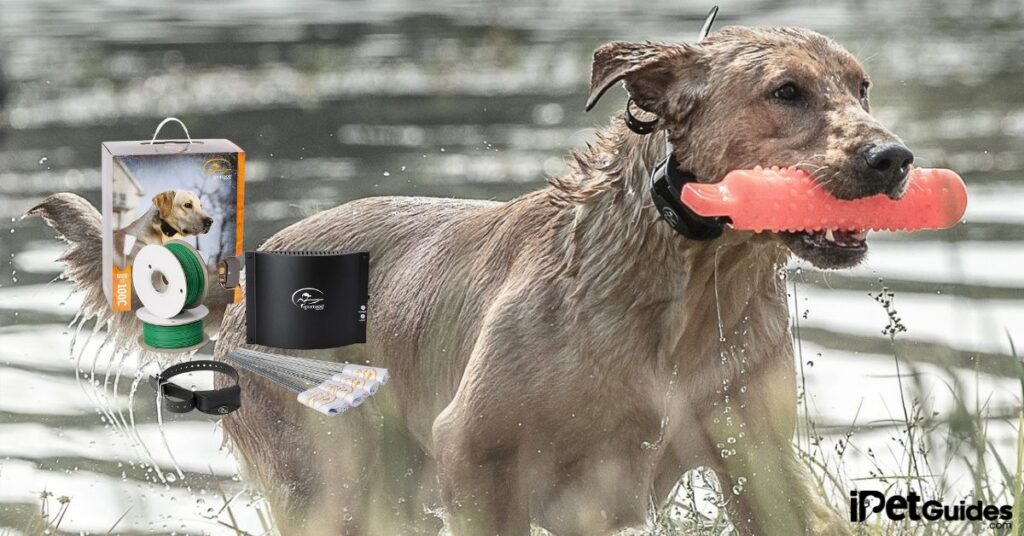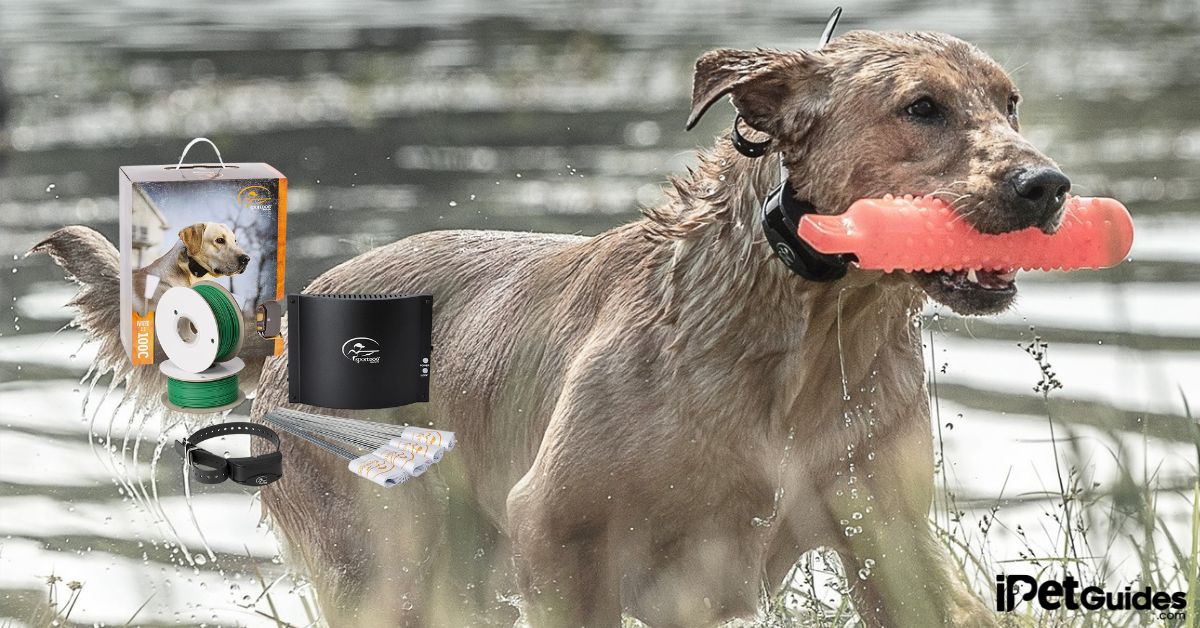
SportDog Fence: A Comprehensive Guide to Wireless Dog Fences
Ensuring the safety and well-being of our canine companions is paramount for any responsible dog owner. One popular solution for keeping dogs safely within designated boundaries is the wireless dog fence, and SportDog fences have emerged as a leading brand in this market. This comprehensive guide delves into the world of SportDog fences, exploring their features, benefits, and considerations for potential buyers. We aim to provide an objective and informative overview, empowering you to make an informed decision about whether a SportDog fence is the right choice for your pet and your property.
Understanding Wireless Dog Fences
Traditional dog fences involve physical barriers, such as chain-link or wooden fences, which can be costly, time-consuming to install, and visually unappealing. Wireless dog fences, also known as invisible fences, offer an alternative approach. These systems rely on a transmitter that emits a radio signal, creating a circular or custom-shaped boundary. The dog wears a collar equipped with a receiver that detects the signal. When the dog approaches the boundary, the collar emits a warning tone or vibration. If the dog continues closer to the boundary, the collar delivers a static correction, also known as a shock, designed to discourage further movement towards the perimeter.
Why Choose a SportDog Fence?
SportDog is a well-respected brand in the pet containment industry, known for its durable and reliable products. Several factors contribute to the popularity of SportDog fences:
- Reputation for Quality: SportDog has built a strong reputation for producing high-quality, durable dog training and containment systems.
- Ease of Installation: SportDog wireless fences are typically easy to install, requiring minimal tools and technical expertise. This makes them a convenient option for homeowners.
- Customizable Boundaries: Many SportDog systems allow users to adjust the boundary range to suit their property size and shape. Some offer the ability to create custom-shaped boundaries, providing even greater flexibility.
- Multiple Correction Levels: SportDog collars typically offer multiple levels of static correction, allowing owners to customize the intensity to match their dog’s temperament and training level.
- Waterproof Collars: Most SportDog collars are waterproof or water-resistant, making them suitable for dogs who enjoy playing in water or living in wet climates.
- Expandable Systems: Many SportDog systems can accommodate multiple dogs, allowing owners to contain all their pets with a single system.
Key Features of SportDog Wireless Fence Systems
When evaluating a SportDog fence, consider these key features:
- Range: Determine the maximum range of the system and ensure it is sufficient for your property size.
- Collar Size and Weight: Choose a collar that is appropriately sized and weighted for your dog’s breed and size.
- Correction Levels: Look for a system with adjustable correction levels to customize the intensity of the static correction.
- Battery Life: Consider the battery life of the collar and transmitter, and factor in the cost of replacement batteries.
- Number of Dogs Supported: If you have multiple dogs, ensure the system can accommodate them.
- Warranty: Check the warranty offered by SportDog to protect against defects in materials or workmanship.
Popular SportDog Fence Models
SportDog offers a range of wireless fence systems to suit different needs and budgets. Here are a few popular models:
SportDog Brand In-Ground Fence SDF-100A
While technically not a wireless fence, this in-ground system offers a reliable and customizable boundary solution. It involves burying a wire around the perimeter of your yard, and the collar activates when the dog approaches the wire. This system is known for its affordability and effectiveness.
SportDog Contain + Train
This versatile system combines wireless containment with remote training capabilities. It allows you to create a wireless boundary and also use the remote to train your dog with tone, vibration, or static stimulation. This is a good option for owners who want to reinforce training while also containing their dog.
Installation and Training
Proper installation and training are crucial for the success of any wireless dog fence system. Here are some general guidelines:
Installation
- Read the Instructions: Carefully read the manufacturer’s instructions before beginning installation.
- Determine the Boundary: Plan the layout of your boundary and ensure it encompasses the desired area.
- Install the Transmitter: Place the transmitter in a central location, away from metal objects that could interfere with the signal.
- Test the System: Before putting the collar on your dog, test the system to ensure it is working properly.
Training
- Introduce the Collar: Allow your dog to wear the collar for short periods of time to get used to it.
- Flag Training: Mark the boundary with flags and walk your dog along the perimeter, praising them when they stay within the flags.
- Introduce the Correction: Gradually introduce the static correction, starting at the lowest level and increasing as needed.
- Reinforce Training: Continue to reinforce the training with positive reinforcement and consistent commands.
It is essential to be patient and consistent during the training process. Never punish your dog for crossing the boundary. Instead, focus on positive reinforcement and redirecting their behavior. [See also: Dog Training Tips and Tricks]
Potential Benefits of Using a SportDog Fence
- Freedom for Your Dog: Allows your dog to roam freely within a designated area without being confined to a leash or kennel.
- Peace of Mind for Owners: Provides peace of mind knowing that your dog is safely contained within your property.
- Cost-Effective Solution: Can be a more cost-effective alternative to traditional fencing.
- Easy Installation: Typically easy to install, requiring minimal tools and technical expertise.
- Customizable Boundaries: Allows you to customize the boundary range to suit your property size and shape.
Potential Drawbacks of Using a SportDog Fence
- Reliance on Technology: Wireless fences rely on technology, which can be susceptible to interference or malfunctions.
- Training Required: Requires consistent training to be effective.
- Not Suitable for All Dogs: May not be suitable for dogs with a high prey drive or those who are easily distracted.
- Potential for “Run-Through”: Some dogs may be willing to endure the static correction to escape the boundary.
- Does Not Prevent Other Animals from Entering: A wireless fence will not prevent other animals from entering your property.
Important Considerations Before Purchasing a SportDog Fence
Before investing in a SportDog fence, consider the following:
- Your Dog’s Temperament and Training Level: Is your dog easily trained and responsive to commands?
- Your Property Size and Shape: Is your property suitable for a wireless fence system?
- Local Regulations: Are there any local regulations regarding the use of wireless dog fences?
- Potential Obstacles: Are there any obstacles that could interfere with the signal, such as metal buildings or dense foliage?
- Your Budget: How much are you willing to spend on a dog containment system?
Alternatives to SportDog Wireless Fences
If a SportDog fence is not the right choice for you, consider these alternatives:
- Traditional Fencing: Physical fences, such as chain-link or wooden fences, offer a reliable barrier.
- Pet Containment Systems: Other brands of wireless dog fences are available. Research and compare different options.
- Dog Runs or Kennels: Provide a safe and enclosed space for your dog to exercise and play.
- Leash Training: Consistently train your dog to walk on a leash and obey commands.
Maintaining Your SportDog Fence
To ensure the longevity and effectiveness of your SportDog fence, follow these maintenance tips:
- Check the Batteries: Regularly check the batteries in the collar and transmitter and replace them as needed.
- Inspect the Collar: Inspect the collar for any signs of damage or wear and tear.
- Test the System: Periodically test the system to ensure it is working properly.
- Trim Your Dog’s Fur: If your dog has long fur, trim the fur around their neck to ensure proper contact with the collar probes.
- Store the System Properly: When not in use, store the system in a dry, safe place.
Frequently Asked Questions About SportDog Fences
Here are some frequently asked questions about SportDog fences:
- Are SportDog fences safe for dogs?
- When used properly and with consistent training, SportDog fences are generally considered safe. However, it is important to follow the manufacturer’s instructions and monitor your dog’s behavior.
- How long does the battery last in a SportDog collar?
- The battery life varies depending on the model and usage. Refer to the manufacturer’s specifications for the estimated battery life.
- Can I use a SportDog fence for multiple dogs?
- Yes, many SportDog systems can accommodate multiple dogs. You will need to purchase additional collars for each dog.
- What happens if the power goes out?
- Most SportDog systems have a battery backup for the transmitter, which will allow the system to continue functioning during a power outage. However, it is important to have a backup plan in case of a prolonged power outage.
- How do I know if the SportDog fence is working properly?
- You can test the system by walking the perimeter with the collar and observing whether the collar emits a warning tone or static correction when you approach the boundary.
Conclusion
A SportDog fence can be a valuable tool for keeping your dog safe and contained within your property. However, it is important to carefully consider the features, benefits, and potential drawbacks of these systems before making a purchase. Proper installation and training are essential for the success of any wireless dog fence. By doing your research and following the guidelines outlined in this guide, you can make an informed decision about whether a SportDog fence is the right choice for you and your furry friend. Always prioritize your dog’s safety and well-being when choosing a containment system. [See also: Choosing the Right Dog Fence for Your Needs]

